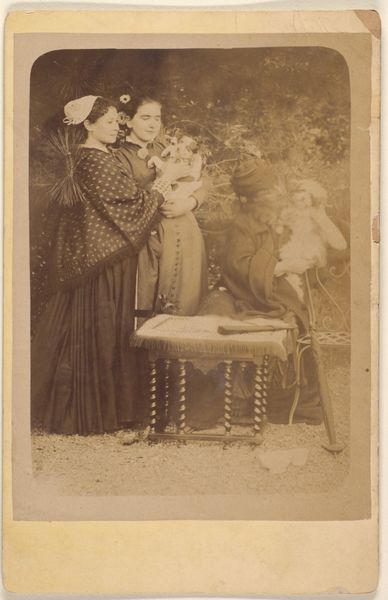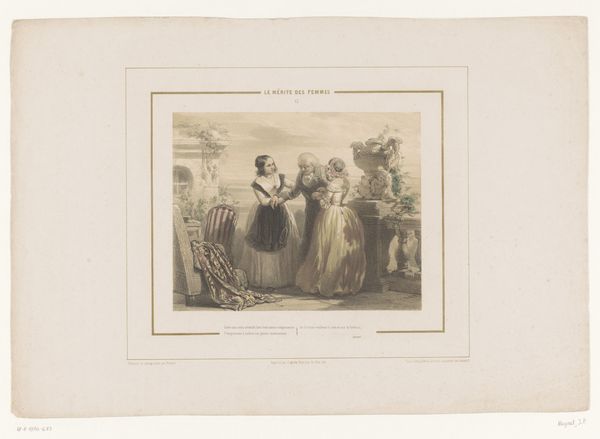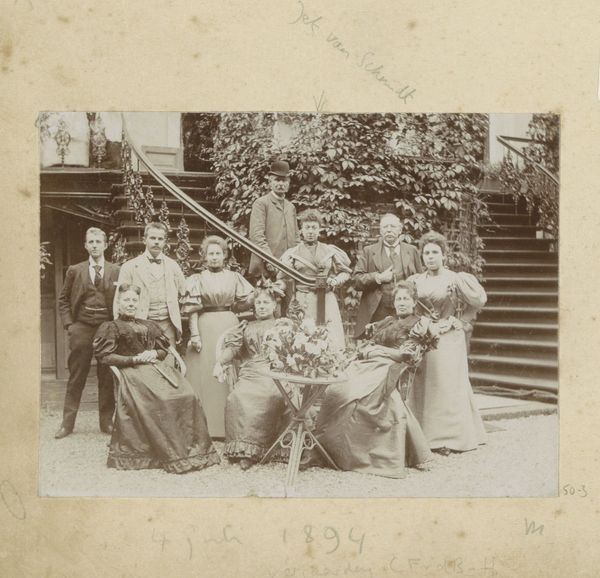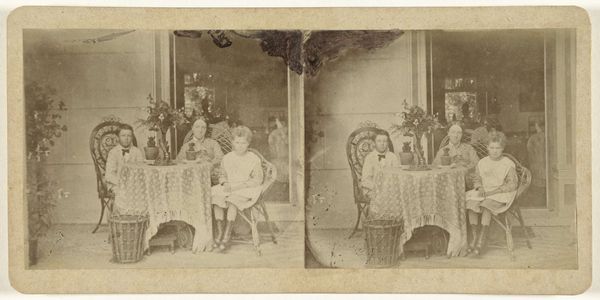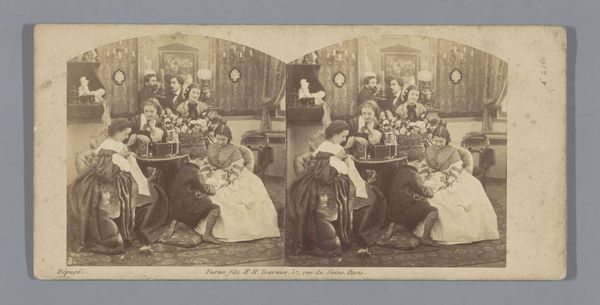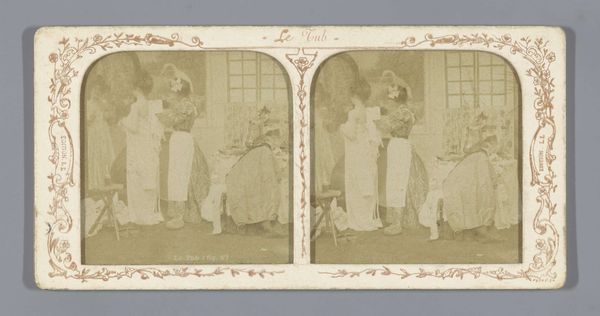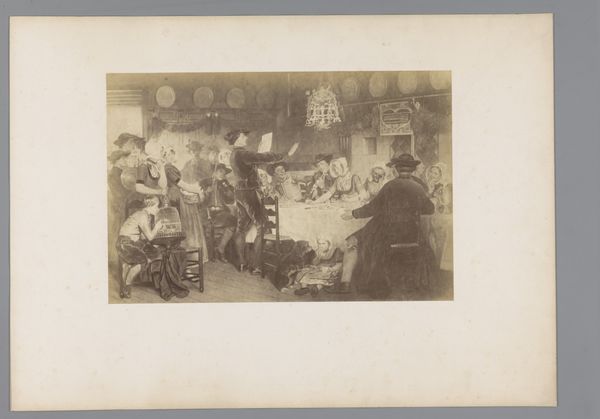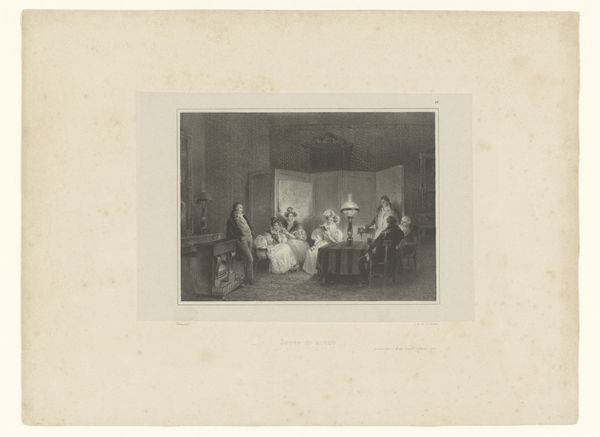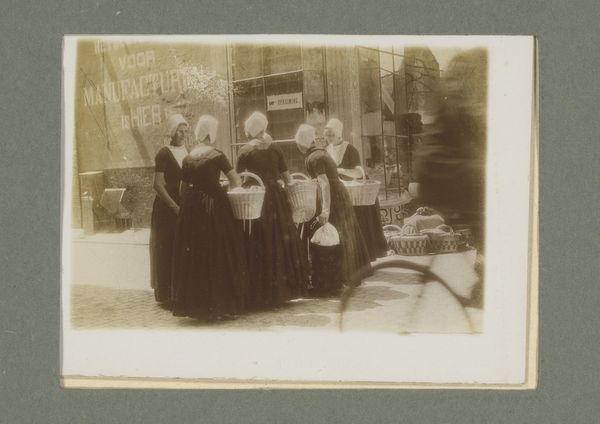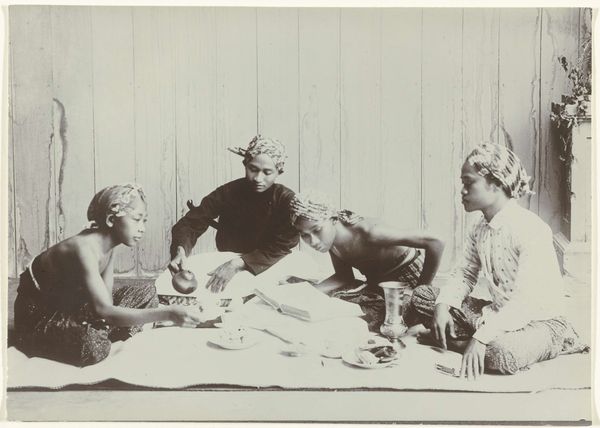
daguerreotype, photography, gelatin-silver-print
#
portrait
#
print photography
#
photo restoration
#
daguerreotype
#
photography
#
group-portraits
#
romanticism
#
gelatin-silver-print
#
men
Dimensions: Mount: 9 15/16 in. × 13 in. (25.3 × 33 cm) Sheet: 7 3/8 × 8 15/16 in. (18.7 × 22.7 cm) Image: 5 in. × 7 1/2 in. (12.7 × 19 cm)
Copyright: Public Domain
Editor: Here we have William Henry Fox Talbot’s "Group Taking Tea at Lacock Abbey," created in 1843, using early photographic methods. It's a fascinating image—a sort of staged domesticity. What strikes you about it? Curator: For me, it’s about understanding the technology at play. Consider the labor involved in producing this single image in 1843. Each figure had to remain still for a prolonged period. The development itself—the chemistry, the process, the fragility of the print—speaks volumes about early photography’s relationship to craft. Editor: So, it's less about the tea party and more about the *making* of the image? Curator: Precisely. Think about the social context, too. Photography was nascent technology, largely accessible only to the wealthy. Who are these people? Likely Talbot’s family, privileged enough to engage in this time-consuming process. This wasn't snapshot photography; it was carefully considered and constructed labor. And that staged quality…it masks the intensive material processes required to materialize a “natural” scene. What appears casual reveals, upon closer examination, profound efforts invested into presenting leisurely civility. Editor: I hadn’t considered it that way. So, by examining the materials and the means of production, we see past the surface scene to understand something deeper about 19th-century society? Curator: Exactly. And that challenges conventional hierarchies within art history. Is photography a "fine art" at this stage, or simply an elaborate craft? How are notions of labor embedded in our perception? It forces us to reflect how we assign value. Editor: It gives a lot of food for thought, moving beyond the apparent image, towards the conditions of its very creation! Thank you.
Comments
No comments
Be the first to comment and join the conversation on the ultimate creative platform.

